Pakistan
Social Issues
Climate change Pakistan, Climate change solutions, Climate risks Pakistan, Environmental issues Pakistan, Environmental protection Pakistan, Floods in Pakistan, Future of Pakistan climate, Global warming Pakistan, Green energy Pakistan, Sustainability in Pakistan, Zeeshan Azhar
Zeeshan Azhar
1 Comments
Climate Change and Pakistan: Risks and Solutions
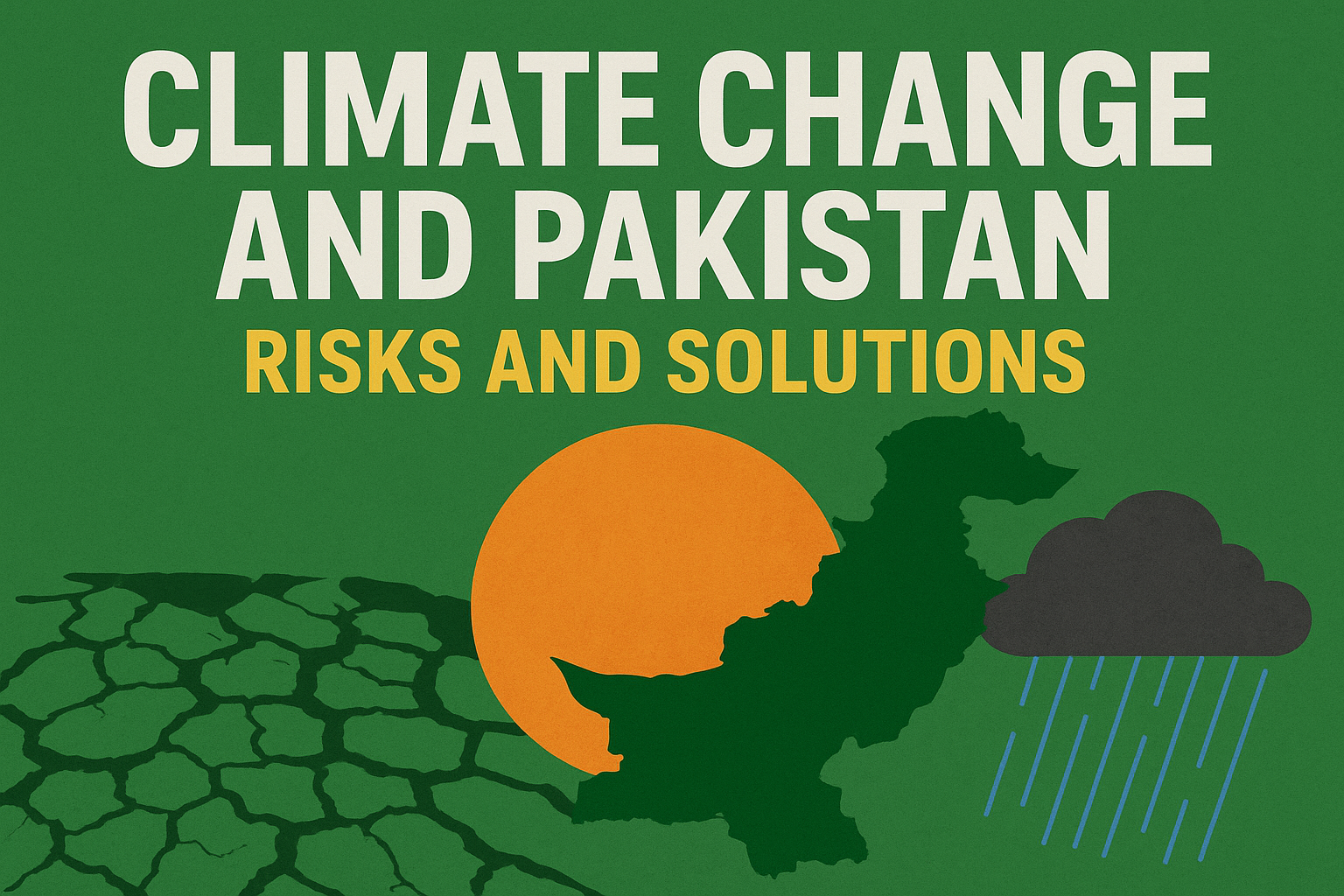
Climate change is no longer a distant threat—it is a present-day reality, and Pakistan is among the countries most vulnerable to its devastating effects. Despite contributing less than 1% to global greenhouse gas emissions, Pakistan faces disproportionate consequences due to its geographical location, fragile economy, and limited resources. From extreme heatwaves and floods to food insecurity and health crises, climate change poses serious risks that demand urgent attention. Yet, within these challenges also lie opportunities for reform, innovation, and sustainable growth.
In this article, we will explore the risks Pakistan faces due to climate change and propose practical solutions to mitigate its impact.
🌍 Why Pakistan is Highly Vulnerable
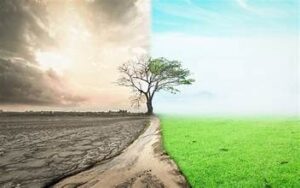
Pakistan ranks among the top 10 countries most affected by climate change, according to the Global Climate Risk Index. Several factors increase its vulnerability:
Geographical Location – With vast river systems, mountainous terrain, and an arid climate, Pakistan is highly exposed to floods, glacial melting, and droughts.
Dependence on Agriculture – Nearly 40% of the population relies on agriculture, making livelihoods highly dependent on climate patterns.
Weak Infrastructure – Limited disaster preparedness and poor urban planning worsen the impact of climate disasters.
Population Pressure – With over 240 million people, rapid urbanization and deforestation intensify environmental stress.
🌡️ Major Risks of Climate Change in Pakistan
1. Flooding and Glacial Melting
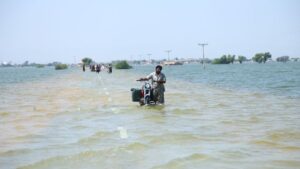
Pakistan’s northern areas are home to thousands of glaciers. Rising global temperatures are accelerating their melting, causing floods and damaging river systems. The 2022 floods displaced millions of people, destroyed crops, and caused billions in damages—an alarming reminder of Pakistan’s climate vulnerability.
2. Extreme Heatwaves

Cities like Jacobabad and Multan are among the hottest places on Earth during summer, with temperatures soaring above 50°C. Heatwaves threaten public health, reduce productivity, and damage crops.
3. Agricultural Crisis and Food Insecurity
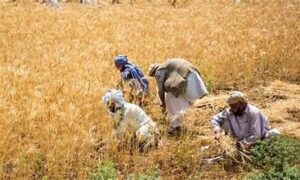
Climate change is altering rainfall patterns, leading to prolonged droughts and water shortages. With agriculture as the backbone of the economy, declining yields in wheat, rice, and cotton threaten food security and exports.
4. Health Challenges

Rising temperatures and flooding increase the spread of diseases like malaria, dengue, and cholera. Heat stress, malnutrition, and respiratory problems are also becoming common.
5. Economic Losses

The World Bank estimates that Pakistan loses billions of dollars annually due to climate-related disasters. The costs of recovery strain an already fragile economy.
🌱 Solutions to Combat Climate Change in Pakistan
Despite the challenges, Pakistan can still act decisively to minimize the impact of climate change. Here are key strategies:
1. Reforestation and Green Initiatives

Pakistan has already launched the Billion Tree Tsunami project, which gained global recognition. Expanding such initiatives can help reduce carbon emissions, prevent soil erosion, and restore biodiversity.
2. Water Management
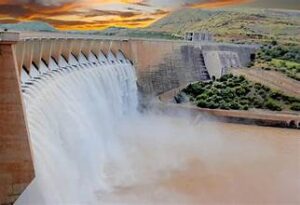
Building new dams and improving existing reservoirs.
Promoting efficient irrigation techniques like drip and sprinkler systems.
Encouraging water recycling and conservation in urban areas.
3. Sustainable Agriculture
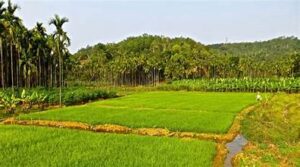
Introducing drought-resistant crop varieties.
Training farmers in modern farming methods.
Promoting organic fertilizers and reducing reliance on chemical pesticides.
4. Renewable Energy Transition

Pakistan relies heavily on imported fossil fuels. By investing in solar, wind, and hydropower, the country can reduce emissions, lower energy costs, and ensure energy security.
5. Disaster Preparedness and Urban Planning
Strengthening early warning systems for floods and heatwaves.
Implementing stricter building codes for climate-resilient infrastructure.
Expanding climate-safe housing in flood-prone areas.
6. Public Awareness and Education

Climate change solutions also require behavior change. Awareness campaigns, school curriculums, and community programs can empower citizens to take eco-friendly actions.
7. International Cooperation
As a developing country with limited resources, Pakistan must continue to advocate for climate justice on global platforms. Accessing international climate funds and technology transfer will be crucial.
🌏 Opportunities for Pakistan
While climate change poses severe risks, it also presents opportunities:
Green Economy Growth – Investing in renewable energy and sustainable farming can create jobs and boost economic stability.
Eco-Tourism – With its glaciers, forests, and natural beauty, Pakistan can promote eco-tourism while ensuring conservation.
Technological Innovation – Adoption of smart agriculture, AI in climate monitoring, and green infrastructure can strengthen resilience.
Conclusion
Climate change is one of the biggest challenges of the 21st century for Pakistan. From devastating floods to food insecurity and health crises, the risks are immense. However, by embracing sustainable solutions, strong leadership, and global partnerships, Pakistan can turn this challenge into an opportunity for resilience and growth.
The time to act is now—for the sake of current and future generations.

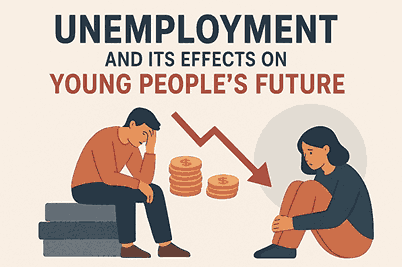



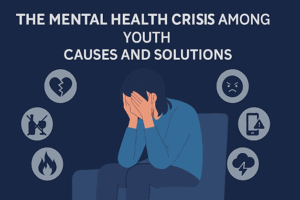







1 comment